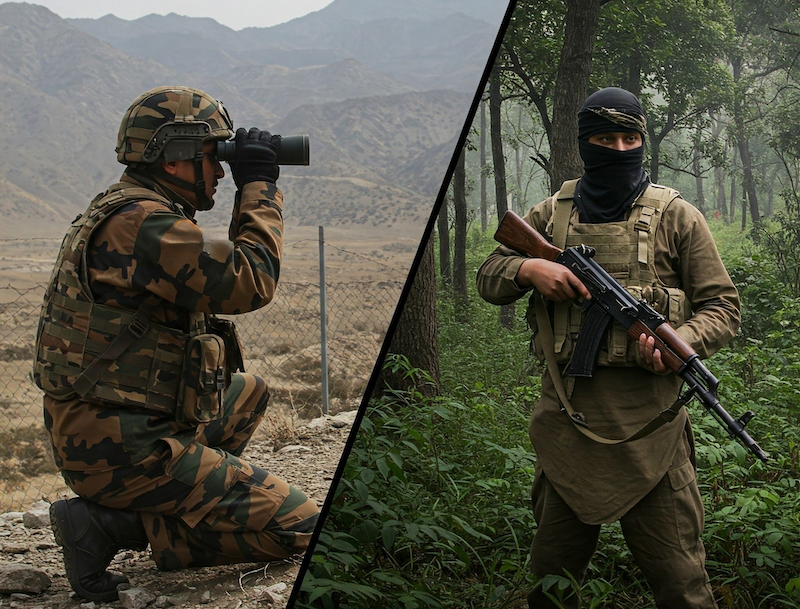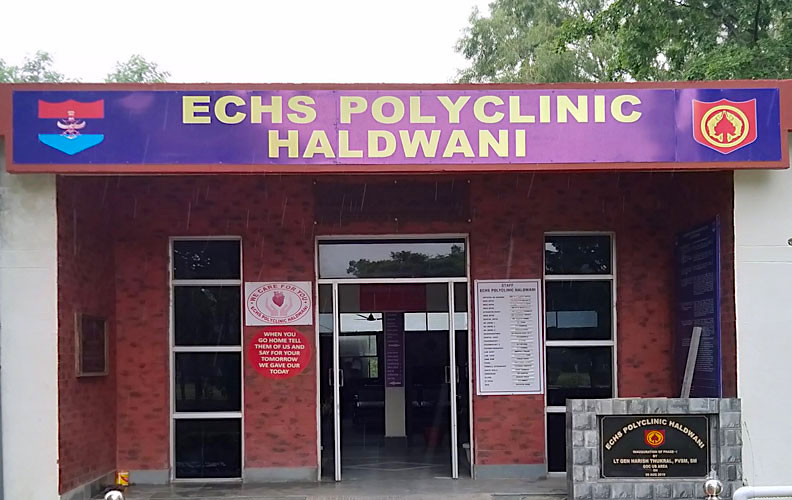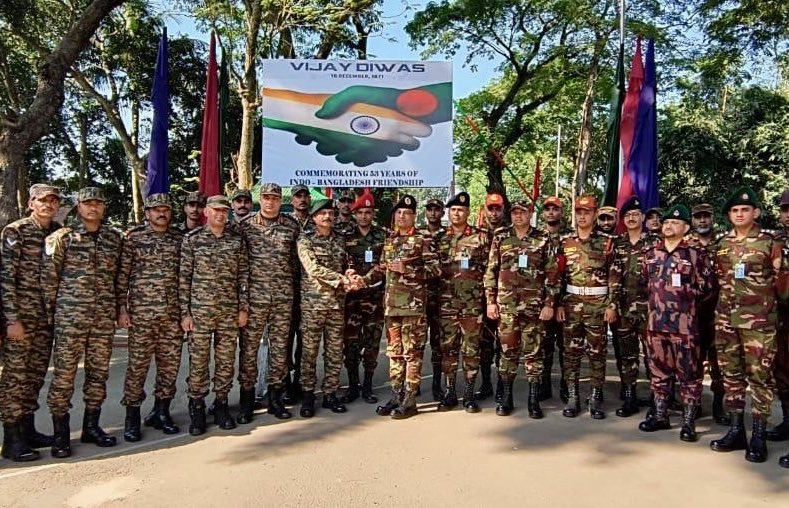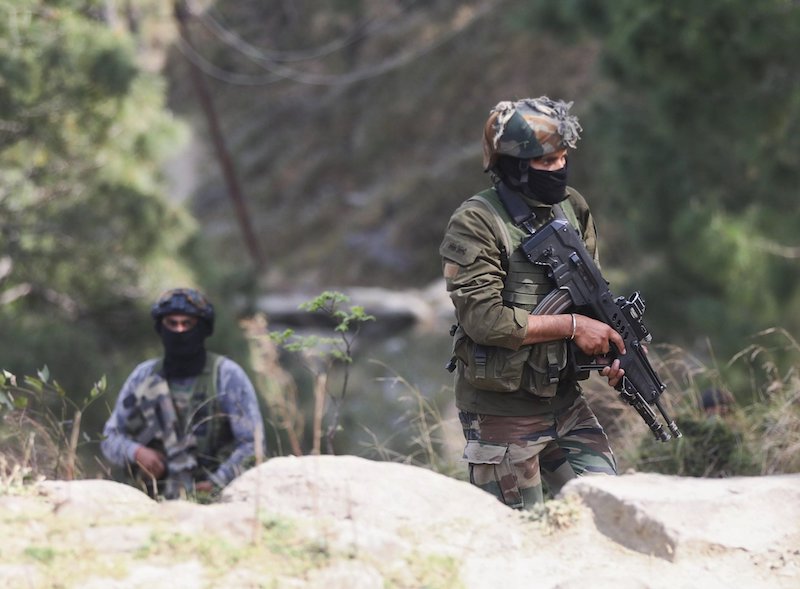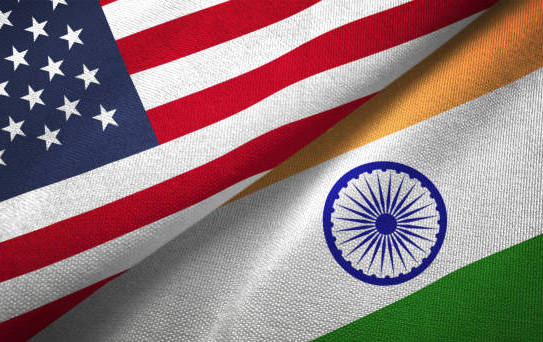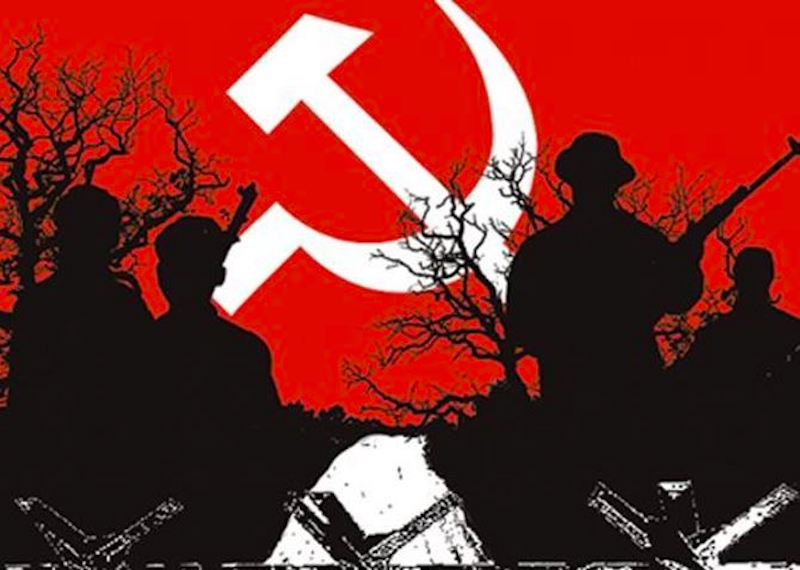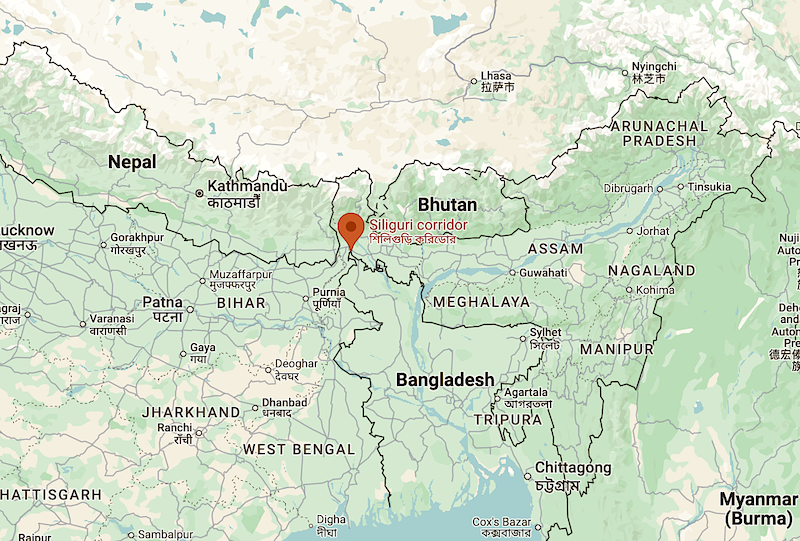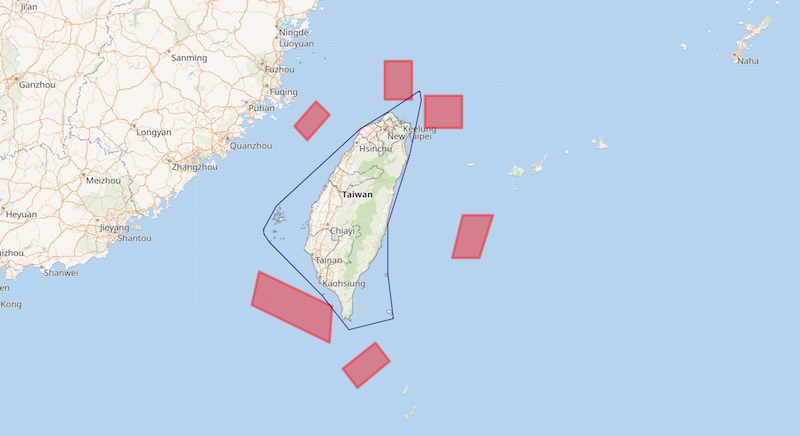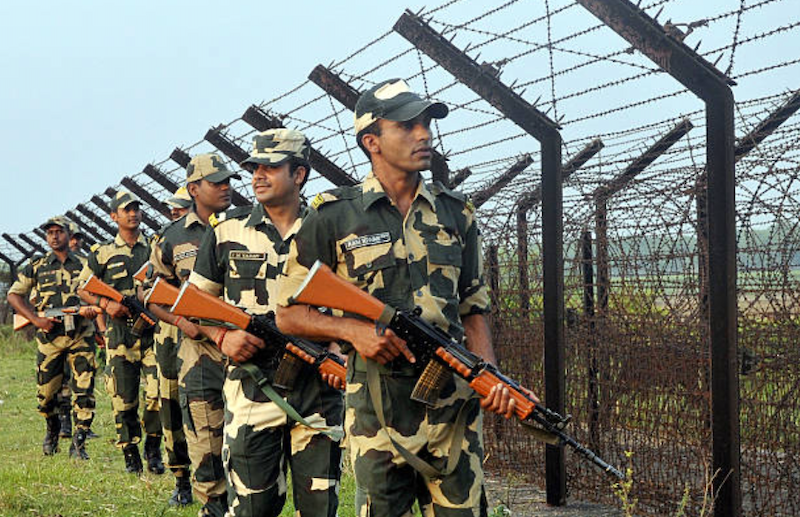 BSF troops patrolling near the India-Bangladesh border in West Bengal. (File photo)
BSF troops patrolling near the India-Bangladesh border in West Bengal. (File photo)
Sheikh Hasina, democracy’s child, is credited with ushering stability in economic and security ties with India after her inauguration as Bangladesh’s prime minister in January 2009. Now, her fall, resulting from her own doings, has pushed the relations into a cycle of chaos and instability. This has adversely affected the regional stability and India’s economic and security interests vis-à-vis Bangladesh and the other two major regional players – China and Pakistan.
India shares a 4,096-kilometre border with Bangladesh, which runs from the states of West Bengal, Assam, Meghalaya, Tripura, and Mizoram. The Bangladesh administrative divisions of Khulna, Rajshahi, Rangpur, Mymensingh, Sylhet, and Chittagong are situated along the border with India. For a long time, the Indian establishment has appreciated the eastern border with Bangladesh as simple and soft with little strategic and security implications without realizing that it is one of the most difficult borders to guard.
Read also: Time to reanalyse, restrategize to counter J&K militant attacks
A realistic analysis will indicate that the India-Bangladesh border is one of the most difficult and unstable borders to manage and control in South Asia. Several factors, like large concentrations of poor population all along the border on both sides, poor economic conditions, inconsistent terrain, lack of civil security, Bangladesh’s perennial internal instability, gaps in fencing due to rivers, nullahs, and large char lands (land formed in the Ganga-Brahmaputra basin by river depositions), man-made gaps, illegal migration, cattle smuggling, villages ahead of border fencing, and anti-India elements in Bangladesh, etc, qualify the India-Bangladesh border as such.
The border is not only difficult to manage and control, but it is very hostile to India and the Indian border-guarding force entrusted with its security – the Border Security Force (BSF). Readers might remember the two major incidents – one in 2001 and the other in 2005 – that highlight the fact.
Read also: Restrategizing anti-Naxalite ops is key to end Maoist insurgency
The 2001 and 2005 India-Bangladesh border clashes
In April 2001, a four-day clash between the BSF and the Border Guard Bangladesh (BGB), which was known as Bangladesh Rifles (BDR) then, in Boraibari near the India-Bangladesh border in Meghalaya resulted in the deaths of 16 BSF soldiers, while two were wounded and two were captured by the BDR. Three BDR troopers were also killed and five were wounded in the clashes.
Again, in April 2005, an armed clash between the BSF and BDR plus armed Bangladeshi locals took place near Tripura’s Akhaura border outpost. In that clash, two BSF men, including an assistant commandant, were killed. Two civilians who took part in the clashes alongside the BDR were also killed.
Read also: Build fence on India-Myanmar border, strengthen free-movement regime
Geopolitical and security implications of Bangladesh crisis for India
In the wake of the current turmoil and political crisis in Bangladesh, the first question that comes to mind is: how to face the short- and long-term security concerns arising out of the present crisis?
There is little doubt that the present unrest in the country that led to the ouster of Sheikh Hasina was well rehearsed and choreographed by elements inimical to her regime. There are speculations, which are not entirely unfounded, that China and Pakistan’s spy agency Inter-Services Intelligence played a major part in fuelling the uprising against Hasina’s Awami League government. It is another matter that Hasina ignored the writing on the wall and failed to take corrective measures to calm down the students’ and society’s anger over the mass killings of students and members of the public.
Now, with Nobel peace laureate Dr Mohammad Yunus been appointed the head of Bangladesh’s interim government, the power balance in all likelihood will shift in favour of Bangladesh Nationalist Party and Jamaat-e-Islami (which Hasina had banned), giving a major boost to radical elements harbouring anti-India feelings. Therefore, it becomes imperative for India to tread very carefully while dealing with the new dispensation to ensure positive movement ahead in bilateral relations.
Read also: National security and India-US convergence
The December 2002 bilateral defence agreement between China and Bangladesh provided Beijing a foothold in the South Asian country and increased its military presence there. The agreement also involves military training to the Bangladesh armed forces.
A new report by the Stockholm International Peace Research institute (SIPRI) on the global arms trade between 2016 and 2020 reveals that Bangladesh procured no less than 17 per cent of all Chinese defence exports during this period. Apart from defence sales and cooperation, China has major footprints in Bangladesh’s infrastructure and trade despite the Awami League government’s “go-slow policy” on many projects, considering geopolitical realities of the region. China’s development of BNS Sheikh Hasina naval base at Pekua in the coastal city of Cox’s Bazar will lead to an increased Chinese influence in the Bay of Bengal and the placement of China’s People’s Liberation Army – Navy (PLA-N) submarines close to the Andaman and Nicobar Command.
Read also: Bringing Jammu & Kashmir out of the quagmire of militancy
With a friendly regime in Dhaka, Beijing will effectively expand its footprints in the region affecting regional security. This, coupled with the ISI’s footprints in the country, will only increase security concerns all along the land border with Bangladesh – and further in the northeastern region.
There are direct and immediate security implications of regime change in Bangladesh, which, if not addressed appropriately, will affect the security and demographic profile of West Bengal and the northeastern region. There is a likelihood of exodus of Awami League leadership, cadres, and members of Bangladesh’s minority groups, especially Hindus, to escape violence and persecution in the country primarily through land borders. This undocumented migration may get a boost since a large chunk of the BGB is engaged in internal security, which has created porosity in their border-guarding efforts.
The entire India-Bangladesh land border has countless touts on both sides who facilitate undocumented migration as well as infiltration for monetary gains into India. This affects the economy, demography, and security of the regions they arrive at. In all probability, the dormant touts will get active to facilitate the surge in illegal migration. To tackle this challenge, the BSF will be the first to take care of the borders and curb such unlawful migration. However, on their part, the police forces of the border states must identify, book, and deactivate touts, who, by their activities, jeopardize India’s national security.
Read also: Hamas attack on Israel: Lessons for India in border guarding
For this, the state police forces need to be active on the ground and not restrict itself to issuing general advisories.
Bangladesh also houses a large population of Rohingya refugees, who were displaced from their homeland in Myanmar owing to the Burmese regime’s genocidal campaign against them. These refugees are housed in camps in Cox’s Bazar and elsewhere. Although the Bangladesh police forces and paramilitary battalions guard these camps, it is possible that they have been taken off from security duties at the refugee camps and deployed elsewhere to tackle the current ongoing nationwide violence in the country.
Inadequate or lack of security in these camps will encourage the refugees to escape and disappear. Many of them would attempt to illegally enter India with the help of the well-oiled network of touts. The BSF needs to keep a sharp eye on the routes leading to the border and assess the time it takes a person to reach the border.
Apart from the influx of undocumented migrants, refugees, and anti-national elements, with the regime change in Bangladesh, separatists active in the northeastern states may get active and try to re-establish their camps inside Bangladesh for carrying out their operations in the region. They may also collaborate with Bangladeshi militant groups, ably aided by their foreign handlers with logistics, arms and ammunition, and training. Activation of these inert groups may prove to be one of the gravest external and internal security challenges for India.
Read also: Command duality in border guarding is against national security
What should be the strategy to tackle the challenges?
The BSF is currently practising a less-than-lethal strategy along the India-Bangladesh border. It needs to reconsider this strategy for effective and impregnable border security. A mild approach does not fit in the scheme of things to address present-day dynamic border-security challenges of illegal migration, refugee influx, and suspected movement of armed separatists.
There is a need for the BSF to carry out a fresh physical security audit of borders and its troop deployment. Physical audit must involve a comprehensive reconnaissance of the terrain, which includes rivers, riverine areas, nullah gaps, char lands, monsoon-created shifting gaps in the border fence, etc. The audit must also include the survey of the physical strength of the fence, sight- and fire-obstructing undergrowth and foliage, and an audit of distances between border outposts
Once a physical audit of the border is done, a holistic appreciation of the deployment of personnel is desirable, based on the inputs from physical audit. If needed, the inter-BOP distances can be reduced and the boots on the ground increased in areas of responsibility by raising more battalions.
Read also: India-Myanmar border guarding needs a fresh approach
There is an urgent need to upgrade India’s eastern borders to bring it at par with its western borders in terms of deployment and technological innovation, which must be in sync with the changing border-security dynamics on eastern borders. This can be achieved by keeping in mind the lessons learned from the Myanmar border, which in no time turned into a “hard border” after the 2022 civil war started in the Southeast Asian country. The border situation got further complicated following the 2023 Manipur ethnic strife, which is still going on.
The present crisis in Bangladesh has brought the India-Bangladesh border into sharp focus because of the newly emerging threats. The BSF, being the country’s best and most professional border-guarding force, is capable of meeting all security challenges. However, the force needs additional boots on the ground, coupled with technological innovations, to successfully meet the challenges.
The government is aware of challenges and knows what needs to be done to make the India-Bangladesh border impregnable. Now, what remains to be seen is how soon the government addresses this urgent issue and takes appropriate measures to tackle the emerging challenges.
Disclaimer: The views expressed in the article are the author’s own and don’t necessarily reflect the views of India Sentinels.
Follow us on social media for quick updates, new photos, videos, and more.
Twitter: https://twitter.com/indiasentinels
Facebook: https://facebook.com/indiasentinels
Instagram: https://instagram.com/indiasentinels
YouTube: https://youtube.com/indiasentinels
© India Sentinels 2024-25

